Verifiable, Secure Mobile Agent Migration in Healthcare Systems Using a Polynomial-Based Threshold Secret Sharing Scheme with a Blowfish Algorithm
Abstract
:1. Introduction
- Mobility: Mobile agents can freeze an operation on one platform and continue with the operation on another (i.e., inside a different region. This is often referred to as agent migration) [5].
- Individualism: Each mobile agent is guided by a program that is especially written to achieve at least one goal. The operations of mobile agents are entirely governed by this code, with no direct intervention from other groups.
- Reactivity: Mobile agents respond to environmental changes in order to accomplish their objectives.
- Proactivity: Mobile agents change their current circumstances and they take a few attempts to accomplish their objectives.
- Sociability refers to a mobile agent’s ability to interact with other mobile agents. This is important because some agents are only made aware of their present situation via communication with other agents.
1.1. Protection of Mobile Agents
- Assault from agents on platforms;
- Agent-to-Agent Assaults;
- Assault from platforms on agents;
- Additional Assault to Agent Platform.
1.2. Mobile Agent Life-Cycle
- Creation: A new mobile agent is made, and the conditions of the mobile agent are initiated.
- Cloning: A specialist copy is made, and the present status of the first is duplicated in order to create cloning agents.
- Dispatch: A mobile agent moves to another host.
- Deactivation: The state of a mobile agent is saved in the repositories when it is in standby mode.
- Activation: The state of a deactivated mobile agent is restored from the repositories and applied to the lifetime mobile agent.
- Retraction: A mobile agent can converse with another agent and the stage.
- Disposal: The life-cycle of a mobile agent ends.
- Communication: Interactions between mobile agents and platforms.
2. Utilization of Mobile Agents in the Medical Care Domain
- Health Data Management: Acquiring, analyzing, and protecting medical information [14].
- Information Retrieval: Retrieving medical information from heterogeneous databases.
- Decision-Making Support: Assisting healthcare workers with procedures, including treatments and diagnostics.
- Telemedicine: Systems focused on remotely monitoring the situation with patients, thus allowing for a wide range of assessments.
- Securing Medical Information: Approaches to working, bearing in mind the wellbeing and security of patient information.
Requirement of Security
3. Related Work
- A patient arrived at the hospital, and the medical faculty requested the patient’s vital clinical records via a VI (Visualized Interface).
- A MAS (Mobile Agent Scheduler) [17] dispatched portable specialists to outside organizations and emergency clinics, in order to solicit and assemble data. When the portable specialist arrived at the outside organization, it finished the check assessment initiated by the MAS of the outside establishment, accumulated data from the outside foundation’s CIS (Clinical-information Index Storage), and it continued its journey to the organization.
- After visiting all of the required institutions, the mobile agents returned to the organization at which they were assigned. The list items were saved in the CIS and displayed via the VI, which allowed the specialists to make better decisions.
4. Problem Statement
5. Proposed Solution
5.1. Secret Sharing Scheme
5.2. Blowfish Encryption
- Size of each block: In a blowfish symmetric algorithm, 64-bits of block size are used.
- Size of Symmetric key: The blowfish cipher used variable key length sizes, from 32 to 448 bits.
- Subkey: In a blowfish cipher eighteen subkey numbers were used for internal operations.
- Number of rounds used in the blowfish cipher: In the blowfish cipher, 16 rounds were used.
- Substitution boxes: There were four substitution boxes used in the blowfish cipher.
- In the blowfish algorithm for encryption and decryption operations, 18 subkeys are needed {P[0], P[1], P[2]...P[17]}, and the same subkeys are used in encryption and decryption.
- Eighteen subkeys are stored in eighteen P arrays, and each array consists of 32 bits.
- P[0] = “456f7d98”, P[1] = “55a788e4”………………. P[17] = “3434eb6d”
- The relationship between each subkey and input key has been changed, as follows:P[0] = Perform the XOR operation between P[0] and the first 32-bits of the applied input key.P[1] = Perform the XOR operation between P[1] and the second 32-bits of the applied input key.P[i] = Perform the XOR operation between P[i] and the (i + 1)th 32-bits of the applied input key.
- From i = 1 to 16:
- Li = Li XOR Ri;
- Ri = F(Li) XOR Ri;
- Swap Li, Ri.
- Undo the previous exchange.
- R = Perform XOR between R and P17.
- L = Perform XOR between L and P18.
- To get 64-bit cypher text, combine L and R.
5.3. Proposed Framework
5.3.1. Threshold Secret Sharing Scheme Using Pair of a Polynomial Equations
- Our SS scheme follows Shamir’s [31] scheme, in that the generation of participants’ shares, where an irregular polynomial of degree is used with coefficients from Zq. In addition, another polynomial is taken as a supporting polynomial of such that all the coefficients are random, except for one coefficient that matches with a coefficient of As a result, the shares of are associated with the shares of and vice versa.
- The shares are also independent because a common coefficient does not provide any dependency between and Moreover, most dishonest participants with shares cannot derive and (and thus cannot get all shares) as two polynomials contain unknowns.
- If none of the shares are modified, any subgroup of ‘t’ participants can generate the correct polynomials for and as shown in Figure 13. Due to two random polynomials and a common coefficient between them, the probability of successful share modification is .
5.3.2. Blowfish Encryption
- From i = 1 to 16:
- Li = Li xor Ri;
- Ri = F(Li) xor Ri;
- Swap Li, Ri.
- Undo last swap.
- R = R xor P17.
- L = L xor P18.
- Concatenate L and R to obtain a 64-bit cipher text.
6. Implementation and Result
7. Conclusions
Author Contributions
Funding
Institutional Review Board Statement
Informed Consent Statement
Data Availability Statement
Conflicts of Interest
References
- Tardo, J.; Valente, L. Mobile agent security and Telescript. In COMPCON’96. Technologies for the Information Superhighway Digest of Papers; IEEE: Piscataway, NJ, USA, 2002; pp. 58–63. [Google Scholar] [CrossRef]
- Narad, M.S.K. Group Authentication Using Back-propagation Neural Network. Int. J. Adv. Res. Comput. Commun. Eng. 2017, 6, 272–278. [Google Scholar] [CrossRef]
- Yao, M. A Security Architecture for Protecting Dynamic Components of Mobile Agents. Doctoral Dissertation, Queensland University of Technology, Brisbane City, QLD, Australia, 2004. [Google Scholar]
- Chen, T.-L.; Chung, Y.-F.; Lin, F.Y.S. Deployment of Secure Mobile Agents for Medical Information Systems. J. Med. Syst. 2011, 36, 2493–2503. [Google Scholar] [CrossRef] [PubMed]
- Esparza, O.; Soriano, M.; Muñoz, J.L.; Forné, J. A protocol for detecting malicious hosts based on limiting the execution time of mobile agents. In Proceedings of the Eighth IEEE Symposium on Computers and Communications. ISCC 2003, Kemer-Antalya Turkey, 3 July 2003. [Google Scholar] [CrossRef]
- Wagner, A. Mobile agent: Based module distribution in heterogeneous networks. In Proceedings of the CF ’04: Proceedings of the 1st Conference on Computing frontiers, New York, NY, USA, 14–16 April 2004. [Google Scholar] [CrossRef]
- Cavalcante, R.C.; Bittencourt, I.I.; da Silva, A.P.; Silva, M.; Costa, E.; Santos, R. A survey of security in multi-agent systems. Expert Syst. Appl. 2012, 39, 4835–4846. [Google Scholar] [CrossRef]
- Al-Jaljouli, R.; Abawajy, J.H. Secure Mobile Agent-based E-Negotiation for On-Line Trading. In Proceedings of the 2007 IEEE International Symposium on Signal Processing and Information Technology, Giza, Egypt, 15–18 December 2007; pp. 610–615. [Google Scholar] [CrossRef] [Green Version]
- Jansen, W. Countermeasures for mobile agent security. Comput. Commun. 2000, 23, 1667–1676. [Google Scholar] [CrossRef]
- Bagga, P.; Hans, R. Applications of Mobile Agents in Healthcare Domain: A Literature Survey. Int. J. Grid Distrib. Comput. 2015, 8, 55–72. [Google Scholar] [CrossRef]
- Kumar, P.; Singhal, N.; Singh, S. Anonymous Scheme for Secure Mobile Agent Migration Using Mignotte’s Sequence and Back Propagation Artificial Neural Networks. Int. J. Comput. Inf. Syst. Ind. Manag. Appl. 2021, 13, 192–199. [Google Scholar]
- Santos-Pereira, C.; Augusto, A.B.; Cruz-Correia, R.; Correia, M.E. A secure RBAC mobile agent access control model for healthcare institutions. In Proceedings of the 26th IEEE International Symposium on Computer-Based Medical Systems, Porto, Portugal, 20–22 June 2013; pp. 349–354. [Google Scholar] [CrossRef]
- Vieira-Marques, P.M.; Robles, S.; Cucurull, J.; Cruz-Correia, R.J.; Navarro, G.; Marti, R.; Navarro-Arribas, G. Secure Integration of Distributed Medical Data Using Mobile Agents. IEEE Intell. Syst. 2006, 21, 47–54. [Google Scholar] [CrossRef]
- Fortino, G.; Trunfio, P. Internet of Things Based on Smart Objects; Springer: Berlin/Heidelberg, Germany, 2014. [Google Scholar] [CrossRef]
- Kumar, P.; Vatsa, A.K. Novel Security Architecture and Mechanism for Identity based Information Retrieval System in MANET. Int. J. Mob. Adhoc Netw. 2011, 1, 397–404. [Google Scholar]
- van der Haak, M.; Wolff, A.; Brandner, R.; Drings, P.; Wannenmacher, M.; Wetter, T. Data security and protection in cross-institutional electronic patient records. Int. J. Med. Inform. 2003, 70, 117–130. [Google Scholar] [CrossRef]
- Fong, C.-H.; Parr, G.; Morrow, P. Security Schemes for a Mobile Agent Based Network and System Management Framework. J. Netw. Syst. Manag. 2010, 19, 230–256. [Google Scholar] [CrossRef]
- Burstein, F.; Zaslavsky, A.; Arora, N. Context-aware mobile agents for decision-making support in healthcare emergency applications. In International Workshop on Context Modeling and Decision Support: 05/07/2005-05/07/2005; CEUR Workshop Proceedings: Vienna, Austria, 2005; Volume 144. [Google Scholar]
- Orgun, B.; Vu, J. HL7 ontology and mobile agents for interoperability in heterogeneous medical information systems. Comput. Biol. Med. 2006, 36, 817–836. [Google Scholar] [CrossRef] [PubMed]
- Chaouch, Z.; Tamali, M. A Mobile Agent-Based Technique for Medical Monitoring (Supports of Patients with Diabetes). Int. J. Comput. Model. Algorithms Med. 2014, 4, 17–32. [Google Scholar] [CrossRef] [Green Version]
- Hsu, W.-S.; Pan, J.-I. Secure Mobile Agent for Telemedicine Based on P2P Networks. J. Med. Syst. 2013, 37, 9947. [Google Scholar] [CrossRef] [PubMed] [Green Version]
- Pouyan, A.A.; Ekrami, S.; Taban, M. A Distributed E-health Model Using Mobile Agents. In Proceedings of the Seventh International Conference on Autonomic and Autonomous Systems, Venice/Mestre, Italy, 22–27 May 2011; pp. 7–12. Available online: http://www.thinkmind.org/index.php?view=article&articleid=icas_2011_1_20_20065 (accessed on 15 August 2021).
- Benachenhou, L.; Pierre, S. Protection of a mobile agent with a reference clone. Comput. Commun. 2006, 29, 268–278. [Google Scholar] [CrossRef]
- Biswas, A.K.; Dasgupta, M. Two polynomials based (t, n) threshold secret sharing scheme with cheating detection. Cryptologia 2020, 44, 357–370. [Google Scholar] [CrossRef]
- El-Yahyaoui, A.; EL Kettani, M.D.E.-C. A Verifiable Fully Homomorphic Encryption Scheme for Cloud Computing Security. Technologies 2019, 7, 21. [Google Scholar] [CrossRef]
- Garcia-Perez, A.; Cegarra-Navarro, J.G.; Sallos, M.P.; Martinez-Caro, E.; Chinnaswamy, A. Resilience in healthcare systems: Cyber security and digital transformation. Technovation 2022. [Google Scholar] [CrossRef]
- Patel, K. Performance analysis of AES, DES and Blowfish cryptographic algorithms on small and large data files. Int. J. Inf. Technol. 2019, 11, 813–819. [Google Scholar] [CrossRef]
- Demster, B. Managing Information and Security in Healthcare; Bloomsbury Publishing: London, UK, 2013. [Google Scholar]
- Banerjee, K.; Bali, V. Design and Development of Bioinformatics Feature Based DNA Sequence Data Compression Algorithm. EAI Endorsed Trans. Pervasive Health Technol. 2019, 5, e5. [Google Scholar] [CrossRef] [Green Version]
- Su, C.-J.; Chu, T.-W. A Mobile Multi-Agent Information System for Ubiquitous Fetal Monitoring. Int. J. Environ. Res. Public Health 2014, 11, 600–625. [Google Scholar] [CrossRef]
- Idrissi, H.; Souidi, E.M.; Revel, A. Security of Mobile Agent Platforms Using Access Control and Cryptography. In Agent and Multi-Agent Systems: Technologies and Applications; Springer: Berlin/Heidelberg, Germany, 2015; pp. 27–39. [Google Scholar] [CrossRef]
- Harn, L.; Xia, Z.; Hsu, C.; Liu, Y. Secret sharing with secure secret reconstruction. Inf. Sci. 2020, 519, 1–8. [Google Scholar] [CrossRef]
- Parmar, K.; Jinwala, D.C. Symmetric-Key Based Homomorphic Primitives for End-to-End Secure Data Aggregation in Wireless Sensor Networks. J. Inf. Secur. 2015, 6, 38–50. [Google Scholar] [CrossRef] [Green Version]
- Meng, K.; Miao, F.; Huang, W.; Xiong, Y. Tightly coupled multi-group threshold secret sharing based on Chinese Remainder Theorem. Discret. Appl. Math. 2019, 268, 152–163. [Google Scholar] [CrossRef]
- Hsiao, T.-C.; Wu, Z.-Y.; Chen, T.-L.; Chung, Y.-F.; Chen, T.-S. A hierarchical access control scheme based on Lagrange interpolation for mobile agents. Int. J. Distrib. Sens. Netw. 2018, 14, 1550147718790892. [Google Scholar] [CrossRef] [Green Version]
- Shepherd, S.J. The Tiny Encryption Algorithm. Cryptologia 2007, 31, 233–245. [Google Scholar] [CrossRef]
- Endurthi, A.; Chanu, O.B.; Tentu, A.N.; Venkaiah, V.C. Reusable Multi-Stage Multi-Secret Sharing Schemes Based on CRT. J. Commun. Softw. Syst. 2015, 11, 15–24. [Google Scholar] [CrossRef]
- Chen, H.; Chang, C.-C. A Novel (t,n) Secret Sharing Scheme Based upon Euler’s Theorem. Secur. Commun. Netw. 2019, 2019, 2387358. [Google Scholar] [CrossRef] [Green Version]
- Liu, Y.; Yang, C.; Wang, Y.; Zhu, L.; Ji, W. Cheating identifiable secret sharing scheme using symmetric bivariate polynomial. Inf. Sci. 2018, 453, 21–29. [Google Scholar] [CrossRef]
- Sidhu, A.; Singh, S.; Kumar, R.; Pimenov, D.; Giasin, K. Prioritizing Energy-Intensive Machining Operations and Gauging the Influence of Electric Parameters: An Industrial Case Study. Energies 2021, 14, 4761. [Google Scholar] [CrossRef]
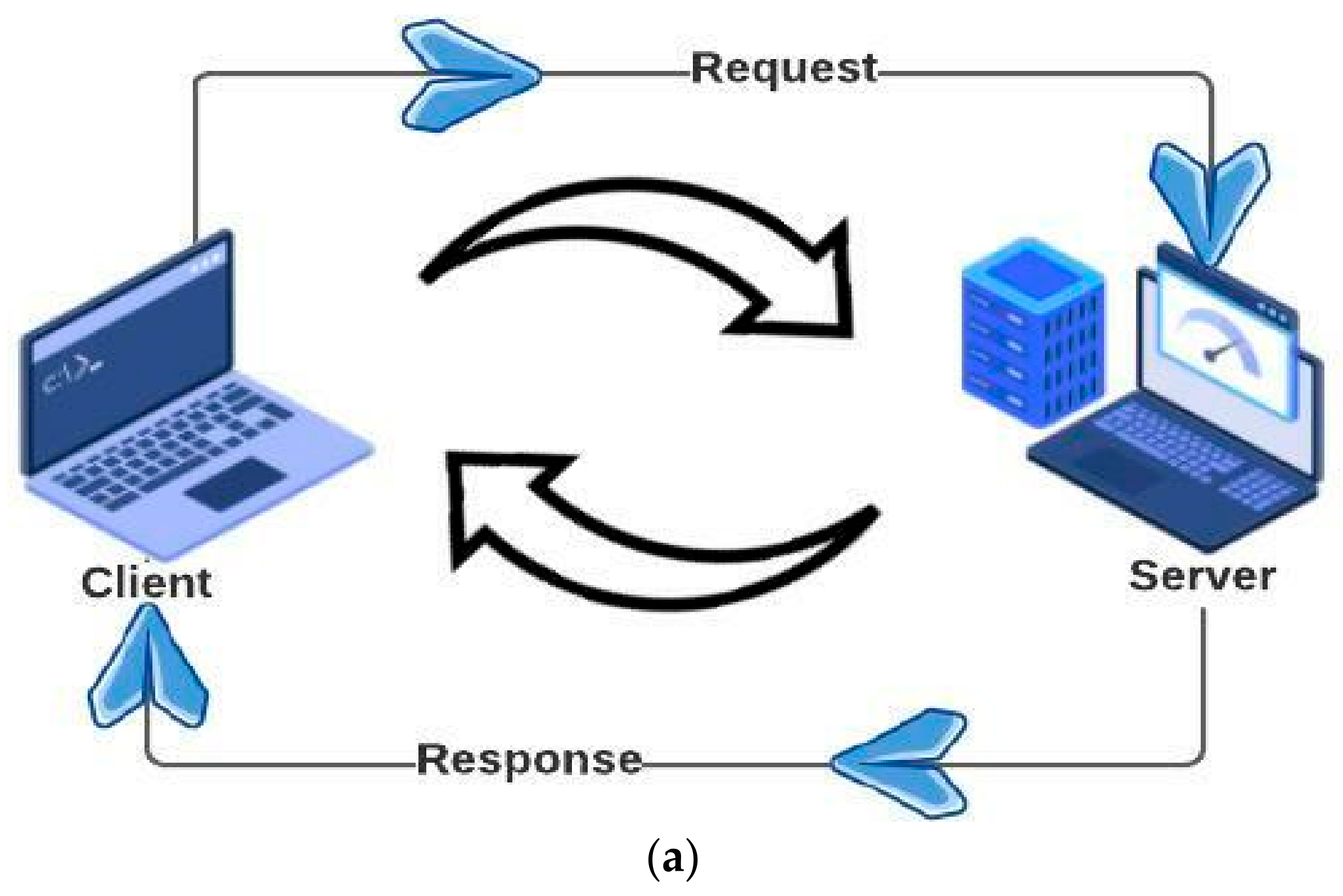
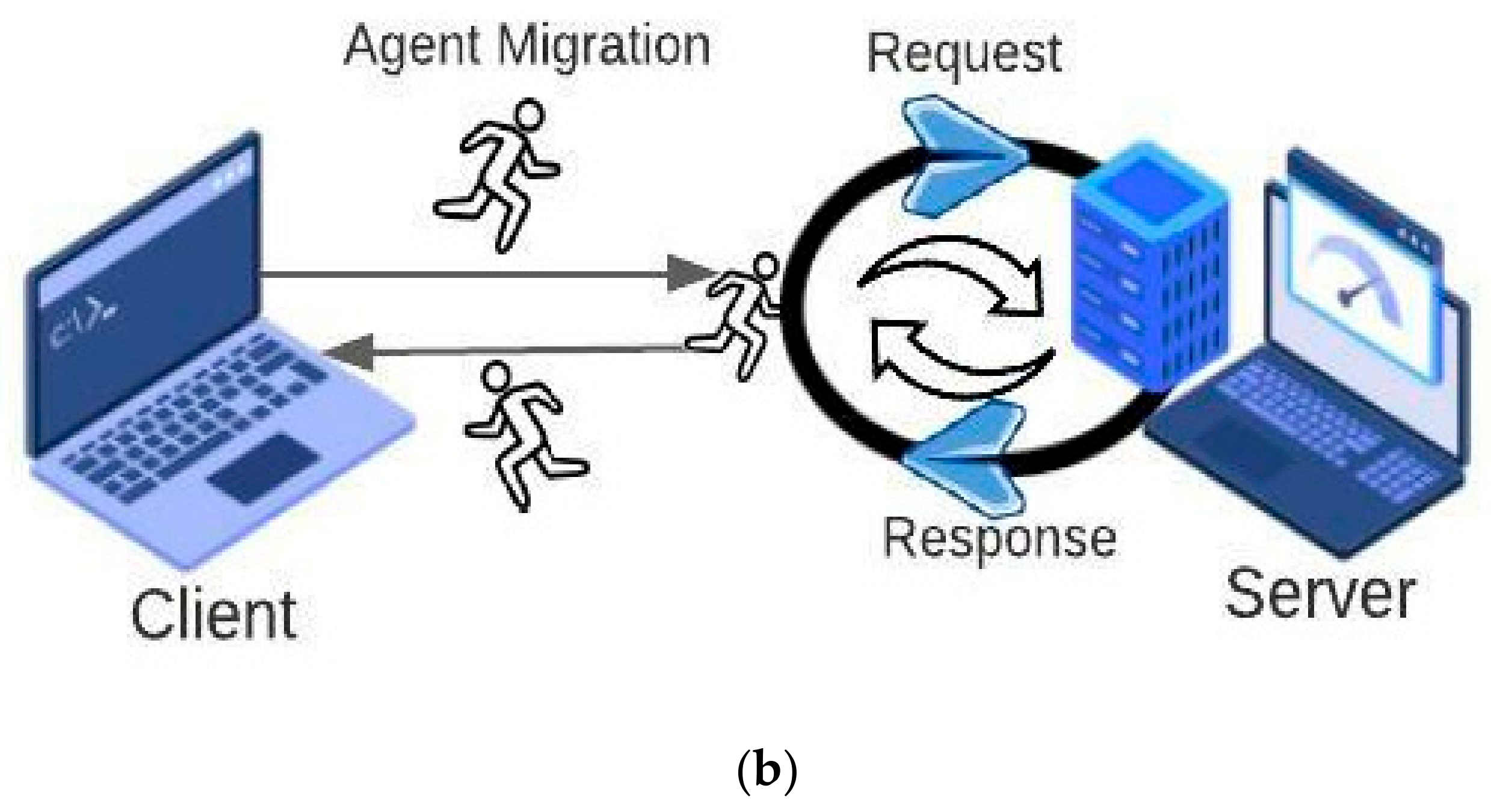
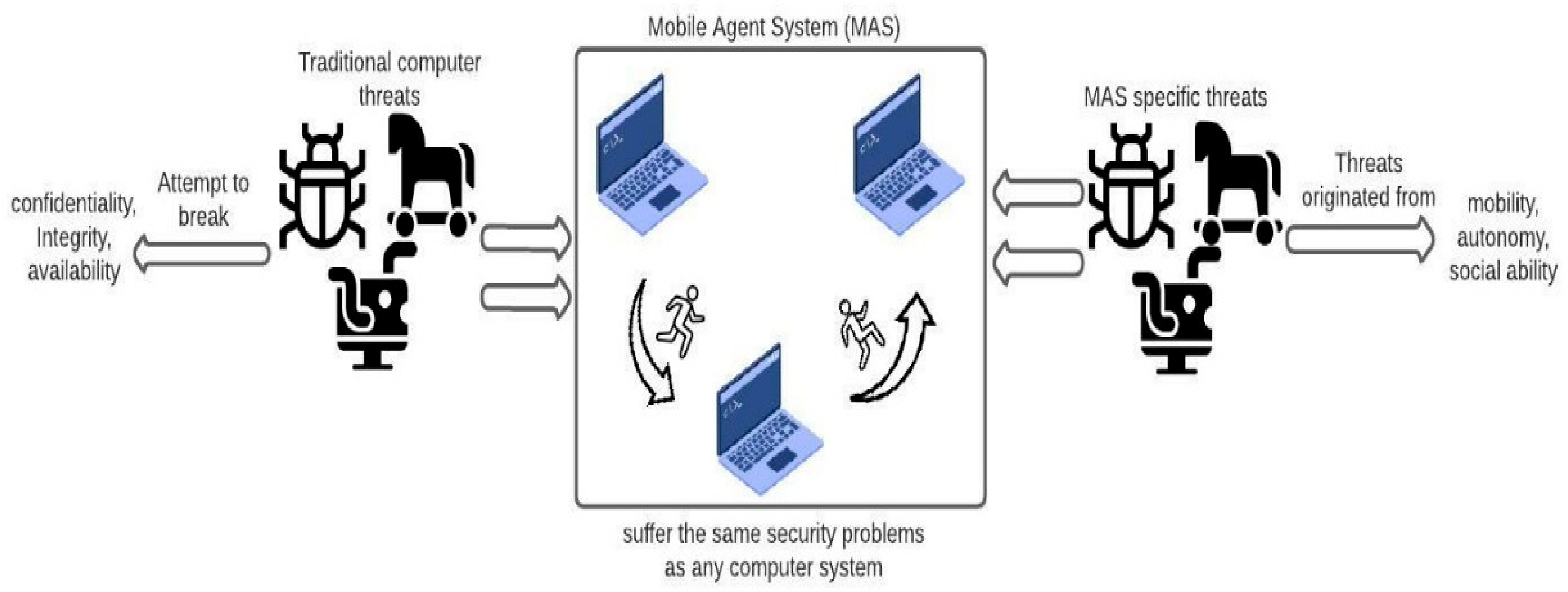

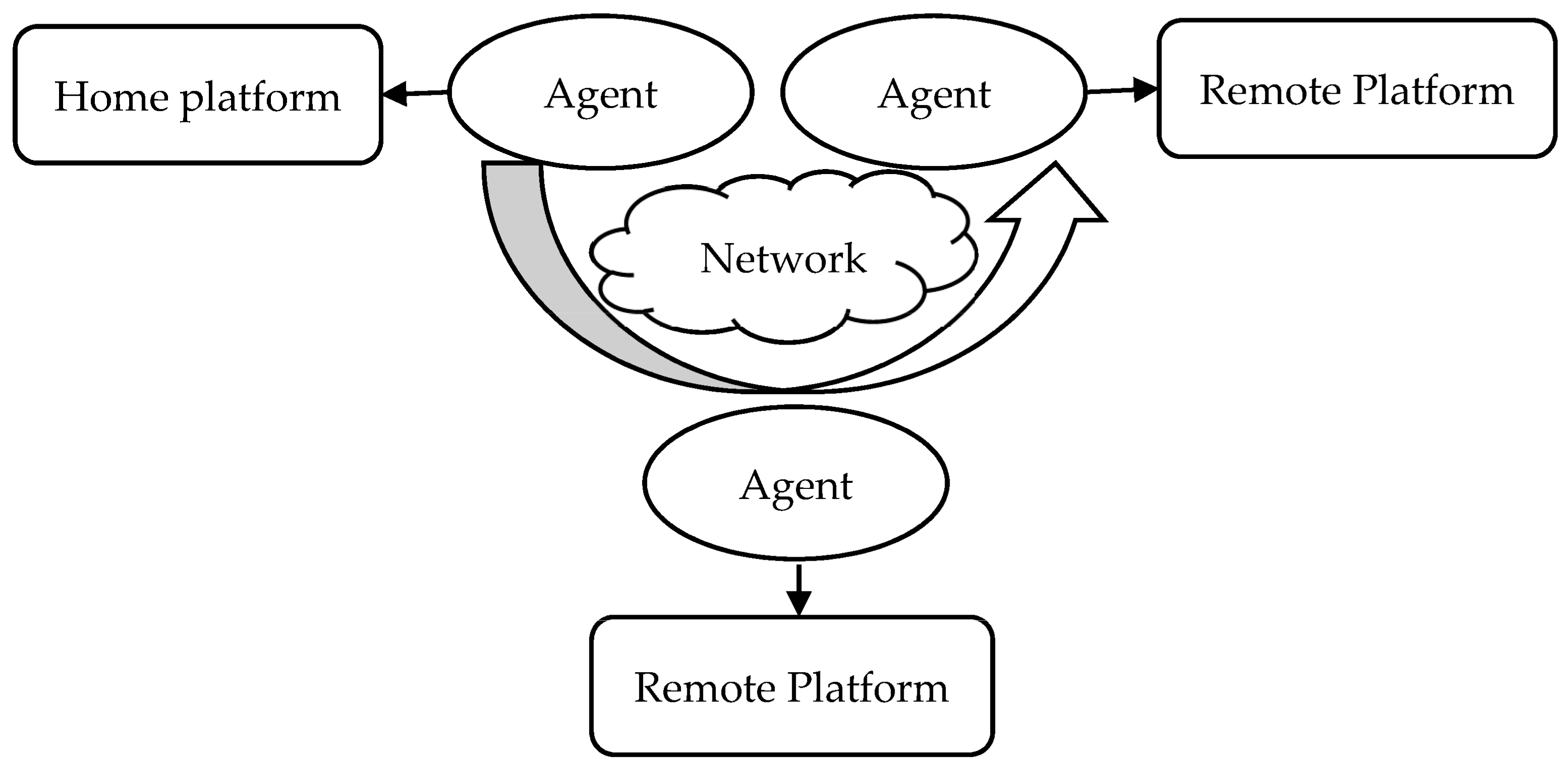
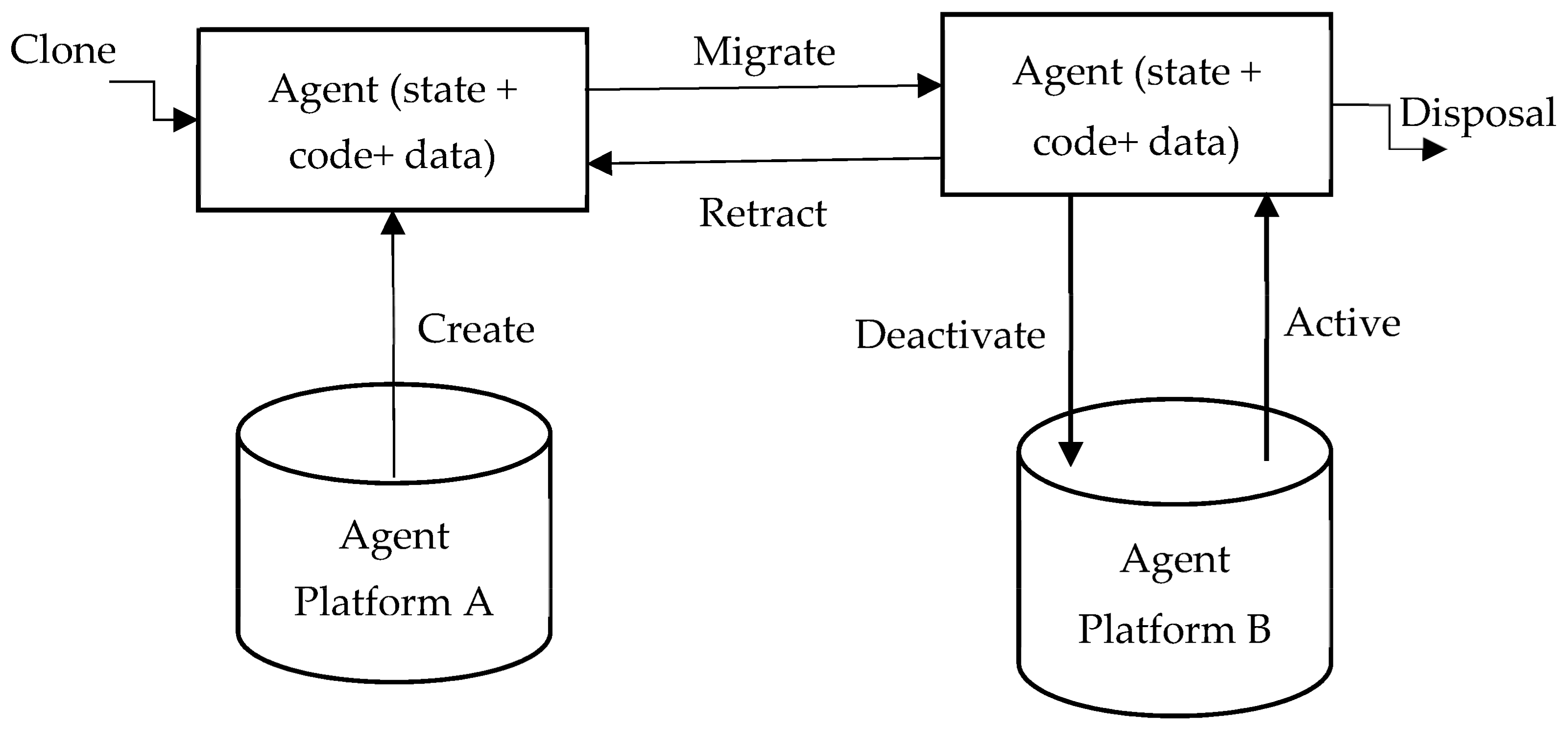
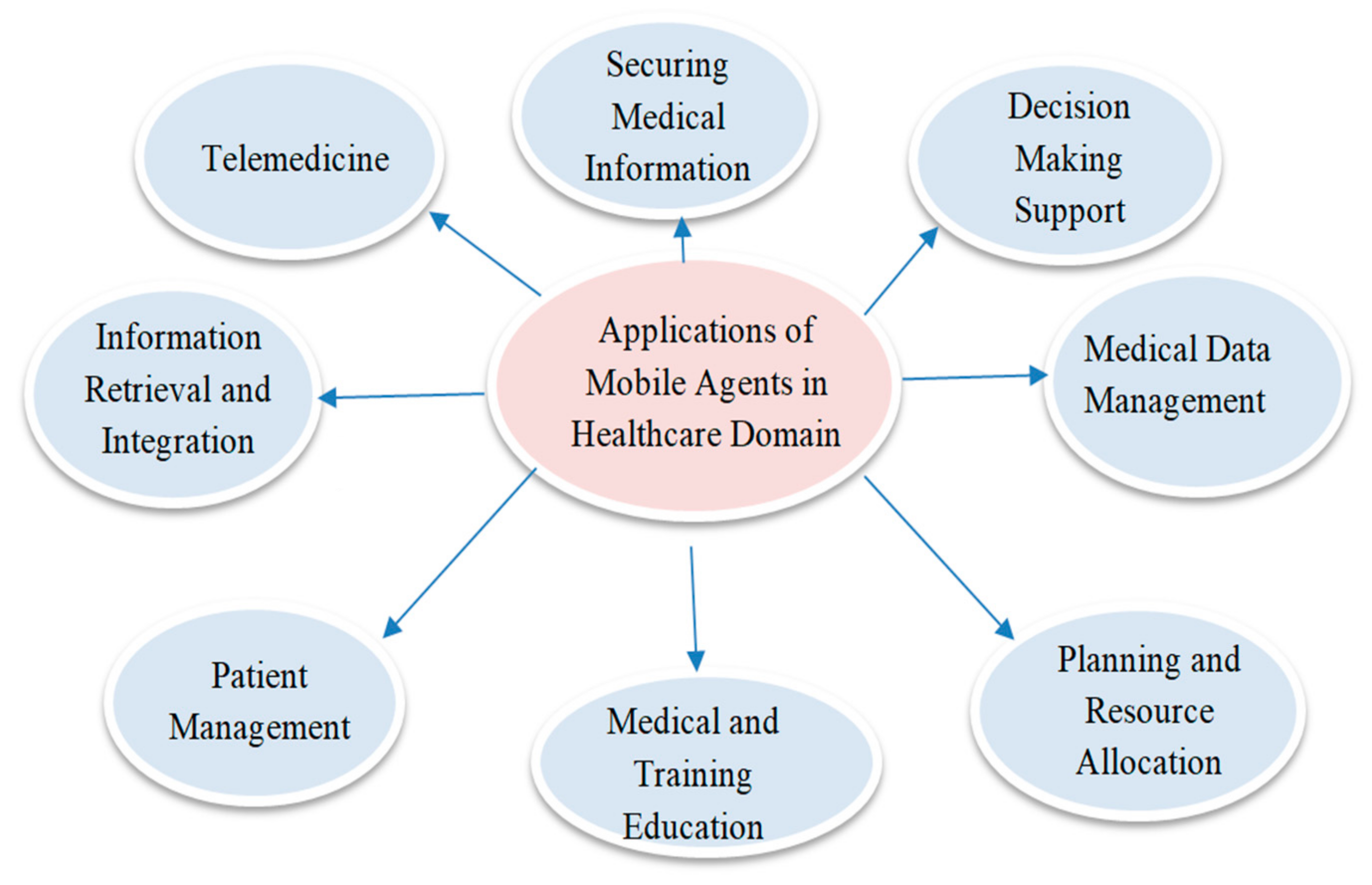
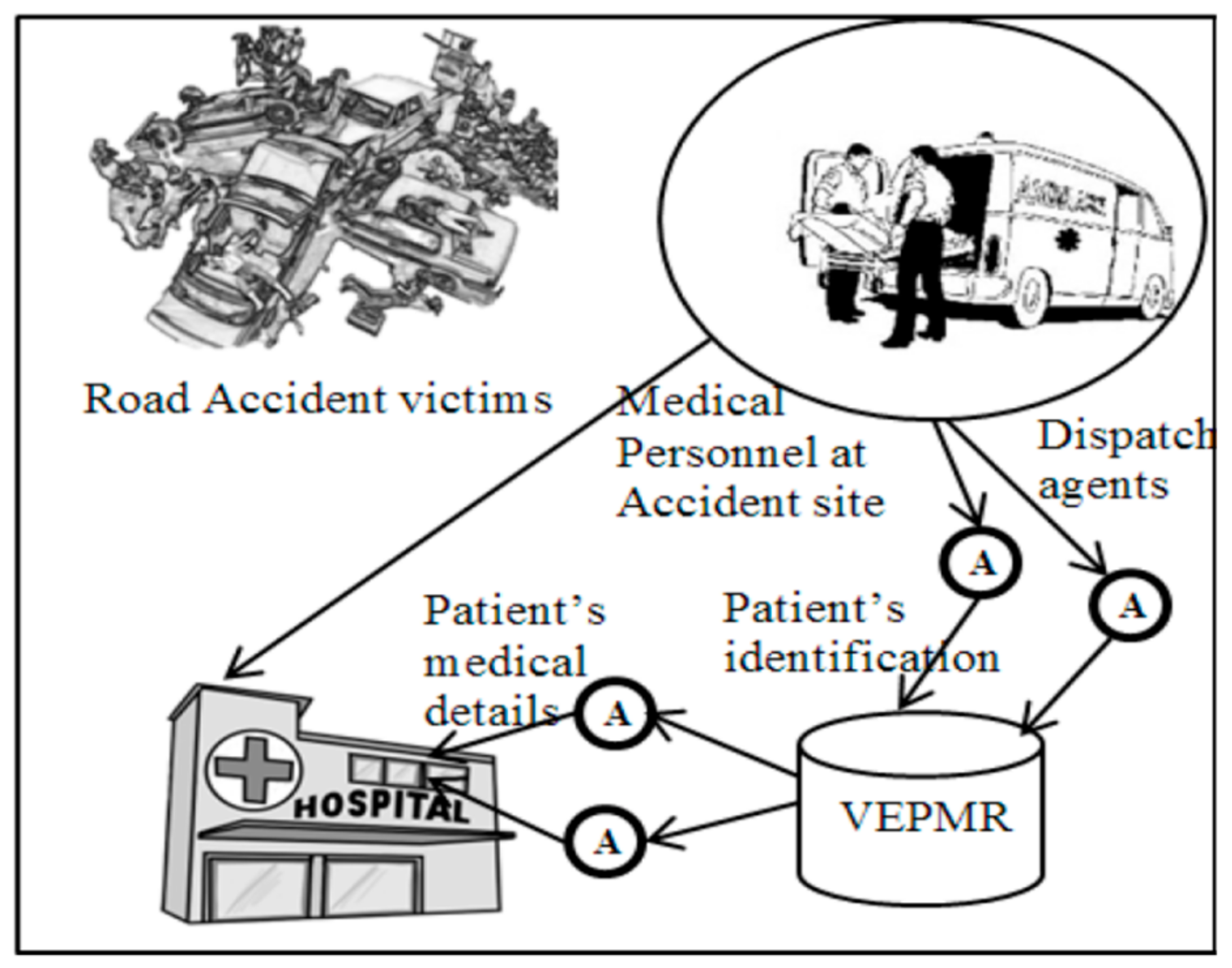
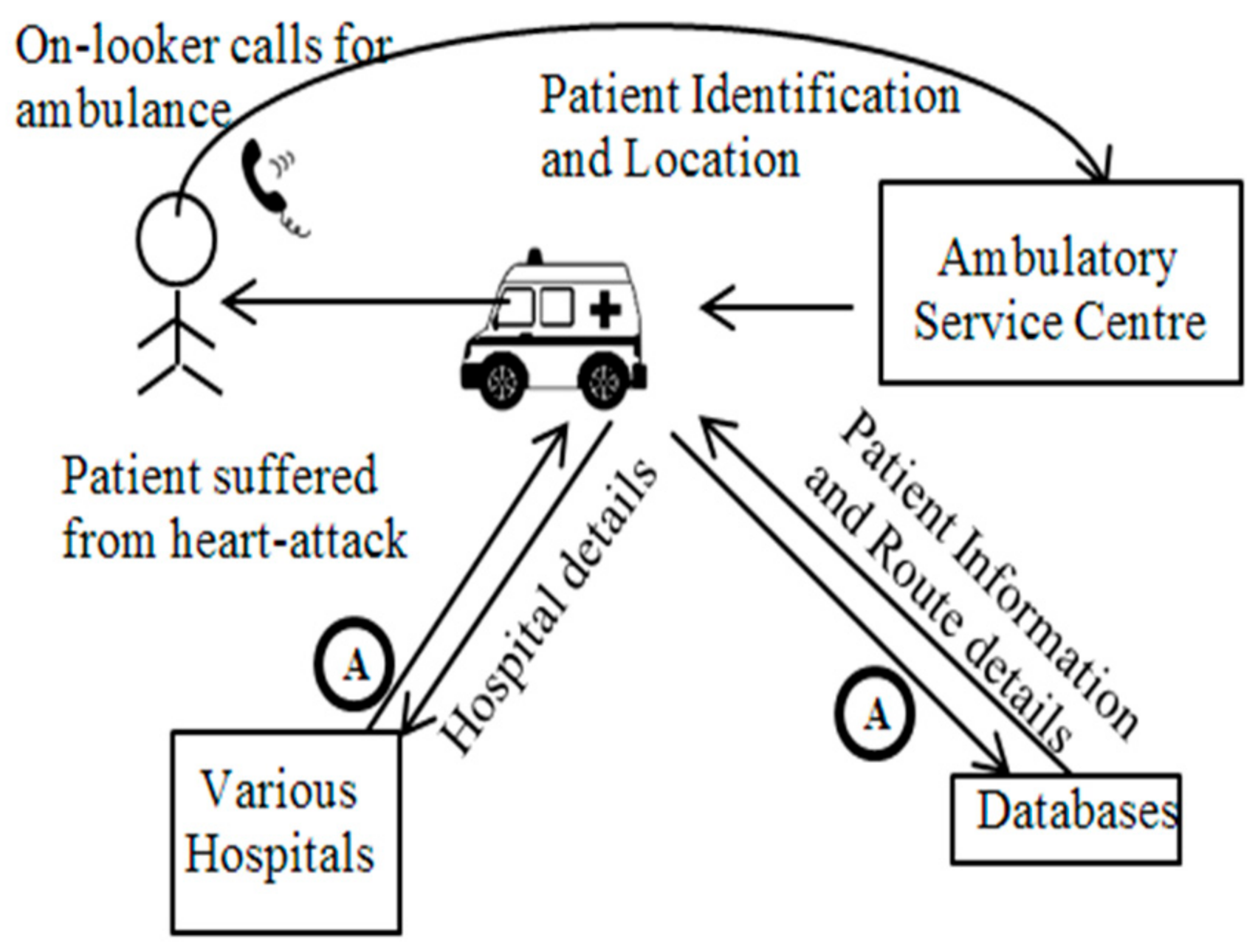
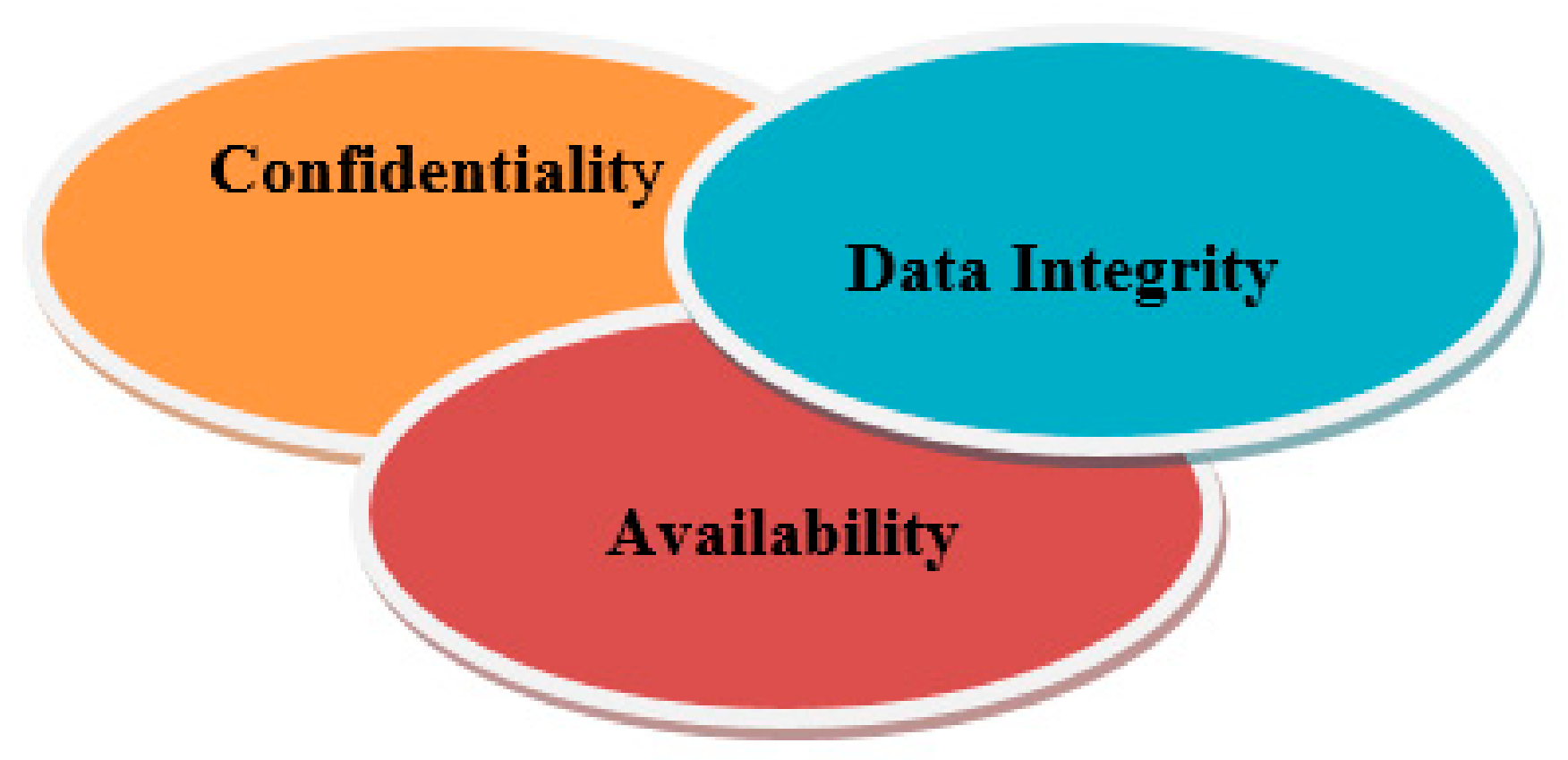
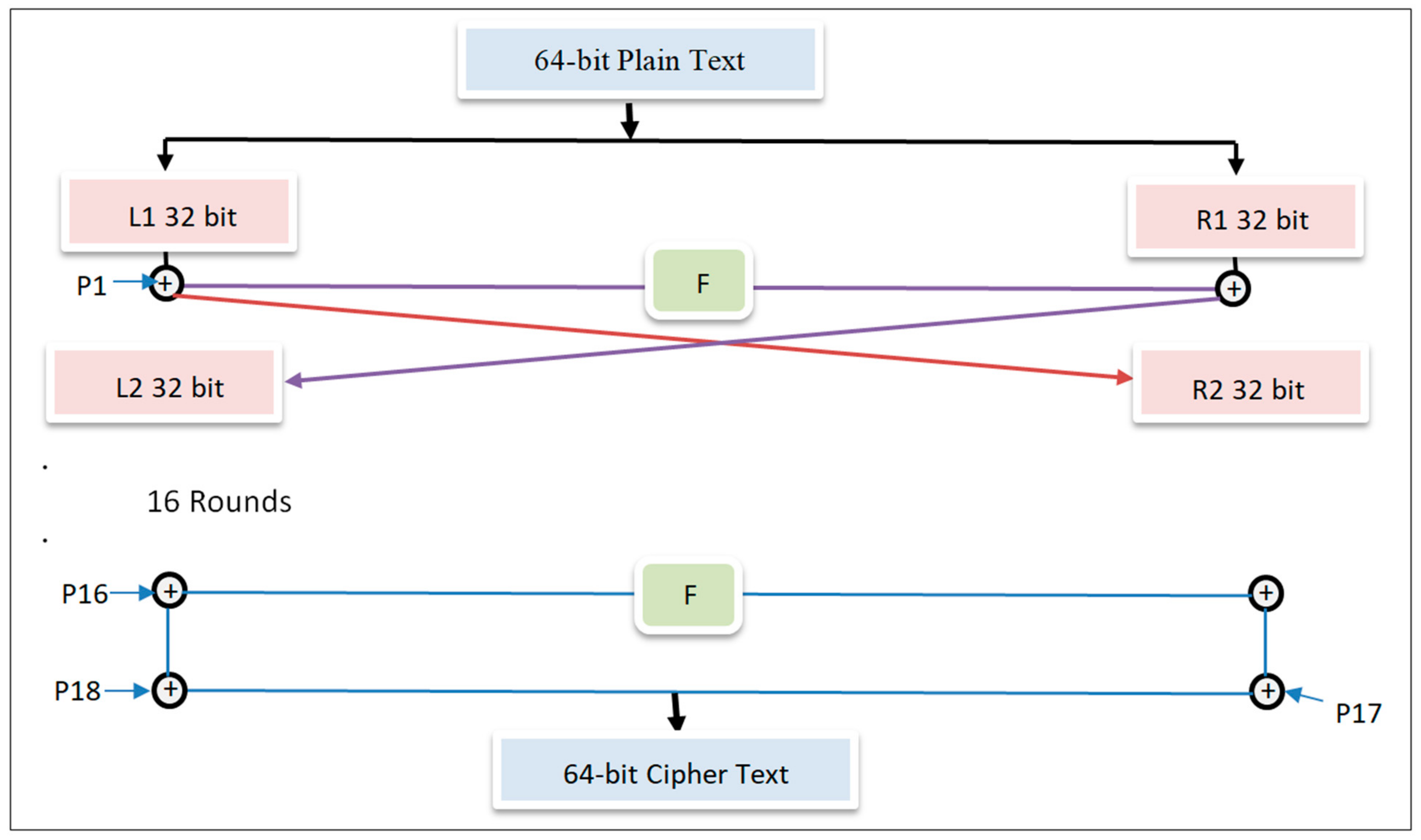

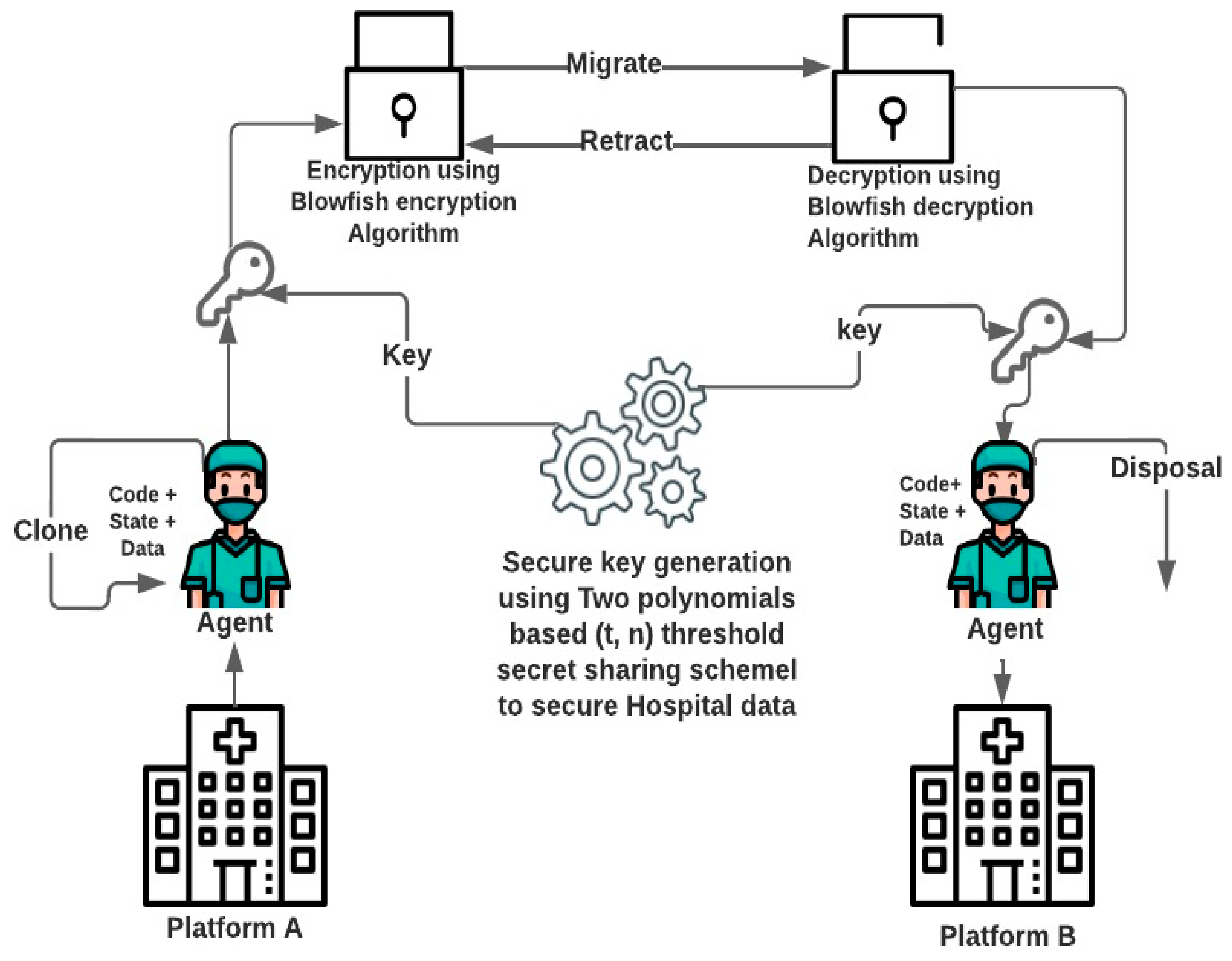
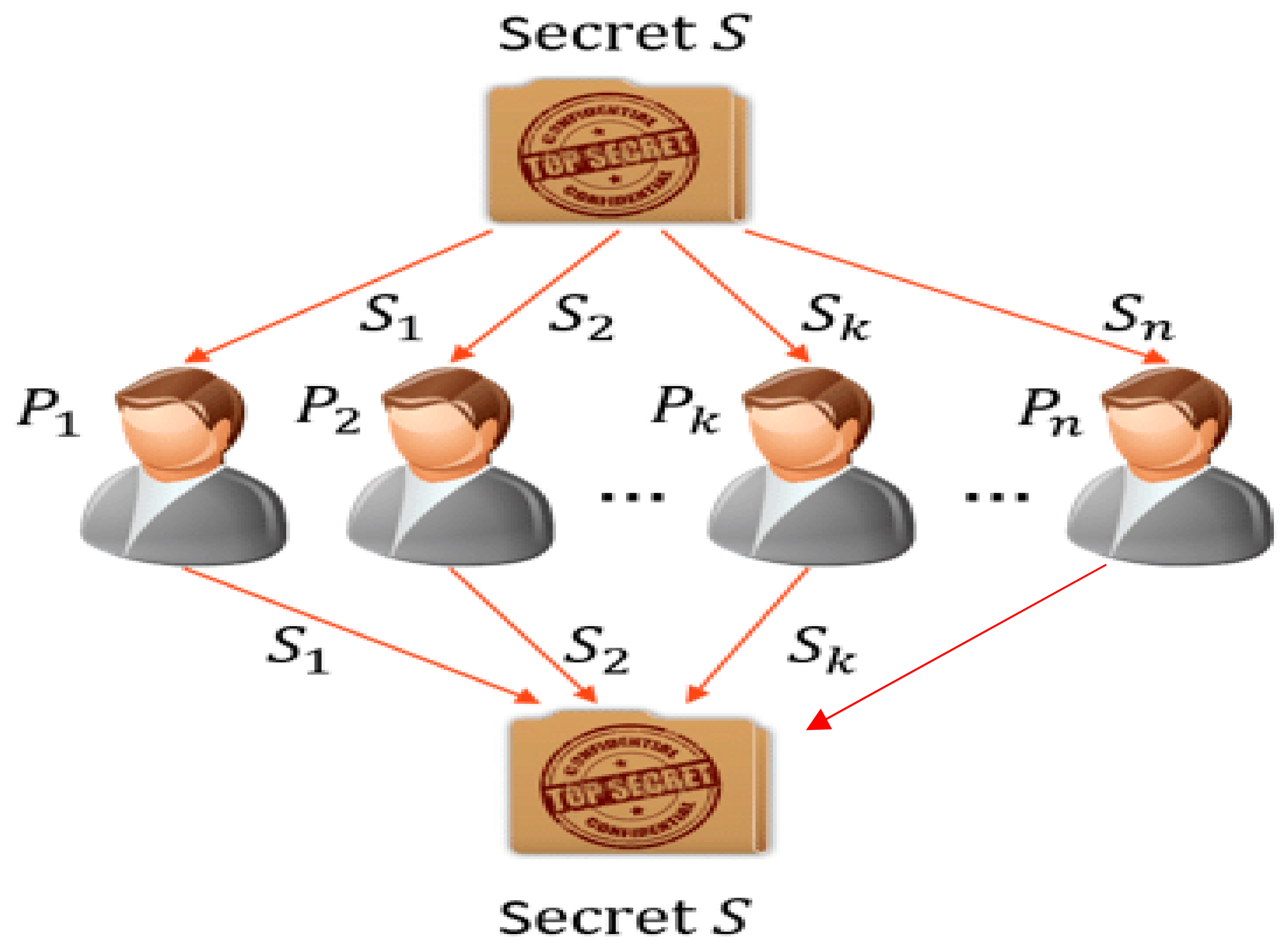

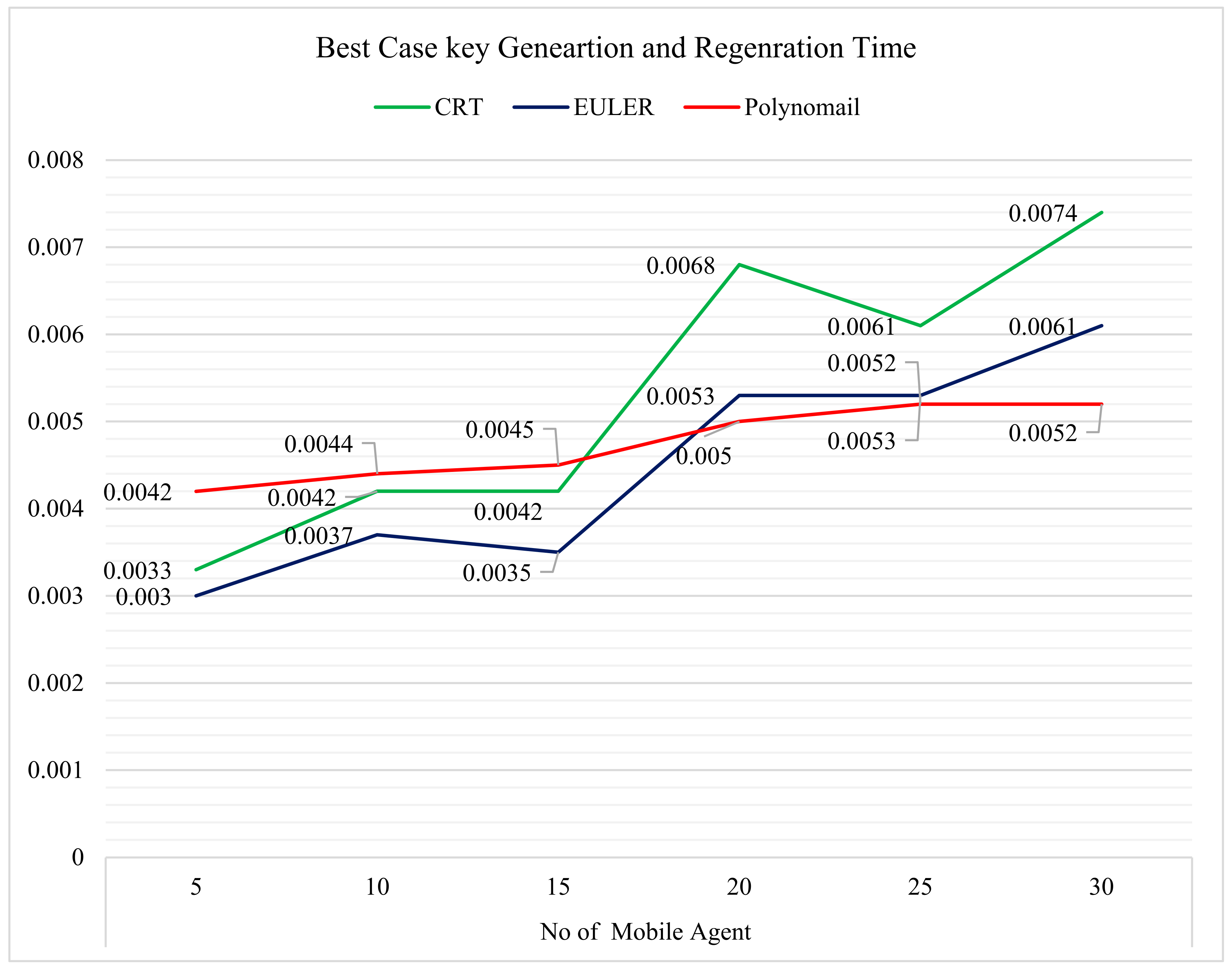

| Remote Procedure Call (RPC) | Mobile Agent Technology |
|---|---|
| Data transmission consumes greater channel capacity. | Rather than transmitting information, a process moves from one host to another, thus using less channel capacity. |
| The network load is high because many requests and replies are sent between the client and server. | The network load decreases because the main customer collaborator is a mobile agent, which moves to the server and in order to make neighbourhood associations. |
| They are not autonomous and self-driven. | They are autonomous and self-driven. |
| The user transmits the request to the computer as boundaries for a strategy. The strategy will be carried out over the server, with the results being returned to the user. | Mobile agents move from one host to the next and they work naturally. |
| Name | Detail |
|---|---|
| Processor | Pentium IV |
| RAM | 256 MB and above |
| Hard Disk | 40 MB |
| Network | WAN |
| Software | Python |
| No. of Mobile Agent | ||||||
|---|---|---|---|---|---|---|
| 5 | 10 | 15 | 20 | 25 | 30 | |
| CRT | 0.00433 | 0.00605 | 0.00677 | 0.00882 | 0.00905 | 0.00964 |
| EULER | 0.00362 | 0.00515 | 0.00648 | 0.00882 | 0.00898 | 0.00943 |
| Polynomial | 0.00484 | 0.00497 | 0.00494 | 0.00577 | 0.00547 | 0.00597 |
| No. of Mobile Agent | ||||||
|---|---|---|---|---|---|---|
| 5 | 10 | 15 | 20 | 25 | 30 | |
| CRT | 0.0033 | 0.0042 | 0.0042 | 0.0068 | 0.0061 | 0.0074 |
| EULER | 0.003 | 0.0037 | 0.0035 | 0.0053 | 0.0053 | 0.0061 |
| Polynomial | 0.0042 | 0.0044 | 0.0045 | 0.005 | 0.0052 | 0.0052 |
| File Size | 100 MB | 200 MB | 300 MB | 400 MB | 500 MB | 600 MB | 700 MB | 800 MB | 900 MB | 1000 MB |
|---|---|---|---|---|---|---|---|---|---|---|
| AES | 191 | 192.4 | 198.4 | 196.4 | 198 | 195.6 | 202.6 | 202.8 | 201.6 | 206.8 |
| DES | 176.8 | 177 | 182 | 184.2 | 185.4 | 186 | 188.8 | 189.2 | 187.4 | 189 |
| Blowfish | 182.6 | 183.6 | 183.8 | 183.8 | 184.8 | 184.6 | 185.8 | 185.2 | 188.4 | 189 |
Publisher’s Note: MDPI stays neutral with regard to jurisdictional claims in published maps and institutional affiliations. |
© 2022 by the authors. Licensee MDPI, Basel, Switzerland. This article is an open access article distributed under the terms and conditions of the Creative Commons Attribution (CC BY) license (https://creativecommons.org/licenses/by/4.0/).
Share and Cite
Kumar, P.; Banerjee, K.; Singhal, N.; Kumar, A.; Rani, S.; Kumar, R.; Lavinia, C.A. Verifiable, Secure Mobile Agent Migration in Healthcare Systems Using a Polynomial-Based Threshold Secret Sharing Scheme with a Blowfish Algorithm. Sensors 2022, 22, 8620. https://doi.org/10.3390/s22228620
Kumar P, Banerjee K, Singhal N, Kumar A, Rani S, Kumar R, Lavinia CA. Verifiable, Secure Mobile Agent Migration in Healthcare Systems Using a Polynomial-Based Threshold Secret Sharing Scheme with a Blowfish Algorithm. Sensors. 2022; 22(22):8620. https://doi.org/10.3390/s22228620
Chicago/Turabian StyleKumar, Pradeep, Kakoli Banerjee, Niraj Singhal, Ajay Kumar, Sita Rani, Raman Kumar, and Cioca Adriana Lavinia. 2022. "Verifiable, Secure Mobile Agent Migration in Healthcare Systems Using a Polynomial-Based Threshold Secret Sharing Scheme with a Blowfish Algorithm" Sensors 22, no. 22: 8620. https://doi.org/10.3390/s22228620





